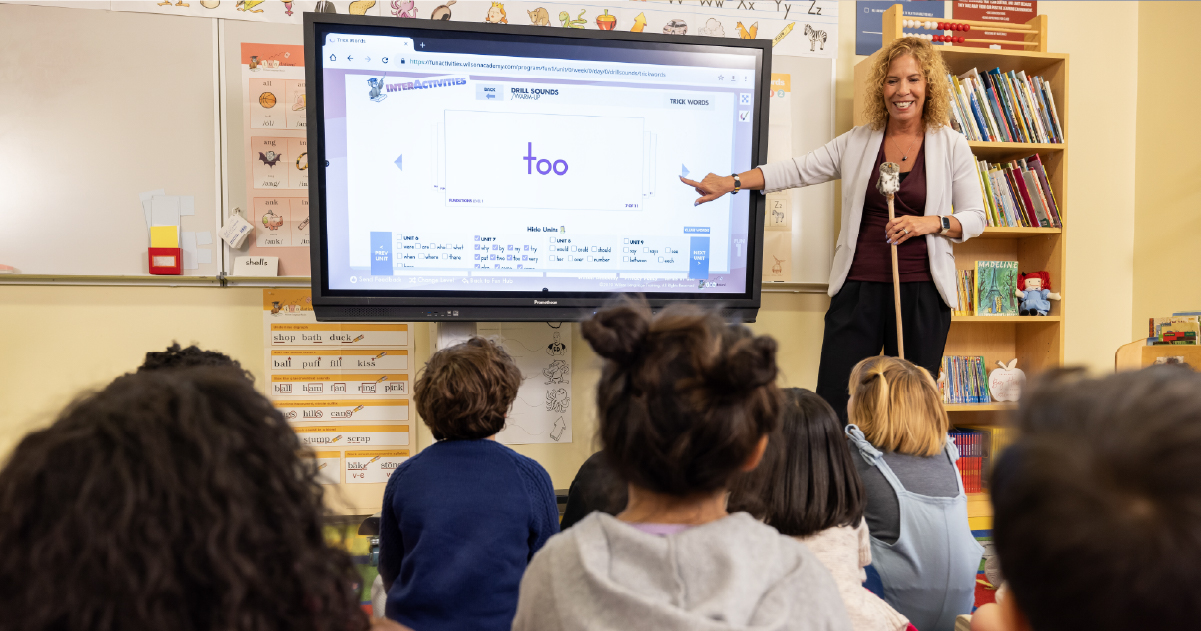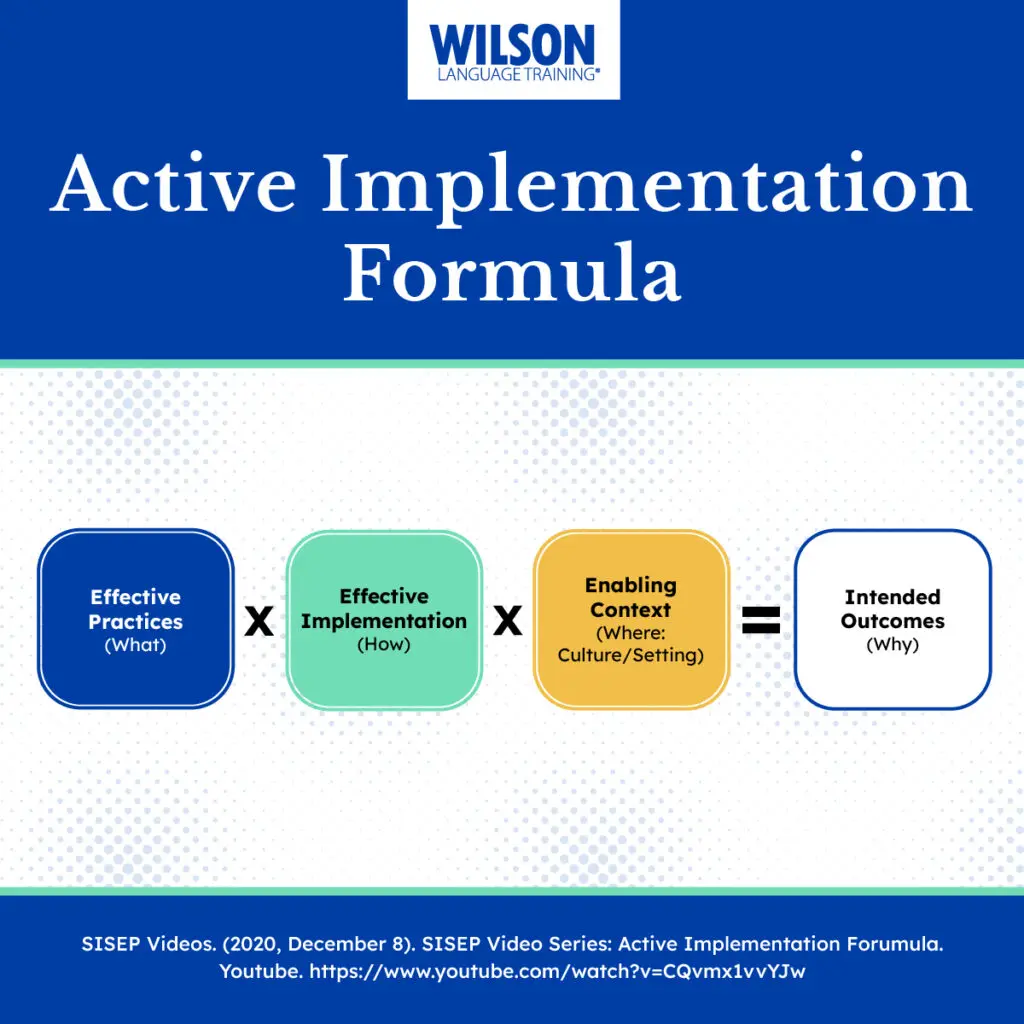
Here at Wilson Language Training we believe that the ability to read opens up a world of possibilities for every individual. So, it was disheartening to see that the 2024 NAEP reading scores are continuing their downward trend.
In recent years, educators have become increasingly familiar with the science of reading (SOR)—in fact, many states now require training for teachers in evidence-based literacy instruction. With consensus around the most effective way to teach reading, why has this knowledge not yet translated into improved student outcomes?
Based on our experience helping 300,000+ educators across the country to bring Structured Literacy practices to their classrooms, we believe the missing link is not just knowing what and how to do so effectively but also how to implement these practices at scale. That’s why we’re huge proponents of Implementation Science.
Implementation Science is the study of methods and strategies to promote the adoption and integration of evidence-based practices in real-world settings. In education, its goal is to provide all students with access to high-quality and effective instruction. It gives schools a framework that serves as the critical bridge between research and practice to ensure that the benefits of evidence-based curricula or innovations can be fully realized and effectively translated.
In our current educational environment, which is increasingly driven by data and student proficiency, the ability to implement evidence-based solutions holds profound significance. In its simplest terms, a student cannot benefit from an intervention they do not receive. Integrity of implementation is the key for students to experience the expected benefits of an intervention, and Implementation Science is the driver to provide the structure to help make it happen.
Implementation Science requires organizations to put systems and supports in place that extend and reinforce new practices. For schools, we’ve found that the Active Implementation Formula provides an effective approach to scale Structured Literacy programs across classrooms and impact student outcomes.
Developed by the National Implementation Research Network (NIRN), the Active Implementation Formula was created using best practices sourced from implementation experts across a range of disciplines, research, and field learning. At its core, the formula identifies three key elements that impact intended outcomes.

Working backward from the intended outcome of improving student reading scores, what practices do educators need to adopt? Based on all the evidence, high-quality Structured Literacy instruction aligned with science of reading principles is the best approach.
Yet not all literacy programs teach all the necessary Structured Literacy components: phonological and phonemic awareness, letter formation, phonics, orthographic conventions, morphology, vocabulary, fluency, and comprehension. Neglecting any one of these components will impact student reading outcomes. So, it’s important to ensure that the programs a school selects provides comprehensive instruction. Fundations® leverages evidence-based practices to teach foundational literacy skills.
Once an effective practice has been chosen, the next consideration is how it is introduced and applied in the classroom. Most districts provide educators with professional learning around new curricula and instructional practices, which is a great place to start.
But do all educators have access to the materials and resources they need when they need them? Are systems in place that allow teachers to easily collect and analyze data to monitor student progress regularly, so they can course correct in a timely fashion? And is the district providing coaching or follow-up support to transfer newly learned skills into classrooms?
Unless proven practices are implemented with fidelity and consistency, results will fall short of their intended targets.
The final element of the formula is the environment or culture in which an implementation takes place. As we all know, change is hard—even in the best of circumstances. And for change to be sustainable, ongoing support is required.
For the best chance of success, it’s a good idea to make sure that the entire leadership team buys into the program, the implementation team comprises stakeholders from all relevant departments, and that schedules and regular meetings are set to review progress and adjust course if needed.
It’s important to note that the three elements mentioned above do not exist in a vacuum. To predict what percent of the intended outcome can be achieved, the Active Implementation Formula multiplies the three elements together.
For example, take a school that selects a solution that delivers 100% of the effective practices. If they don’t follow up with their teachers after launch, their effective implementation percentage may be only 50%. And if there are no regularly scheduled checkpoints to monitor data and progress, their enabling context may also be just 50%.
Using the formula, we see that this school can only achieve 25% (=100% Effective Practices x 50% Effective Implementation x 50% Enabling Context) of its intended outcomes. That’s a low return on investment that does little to move the needle when it comes to improving student reading scores.
As a leader in literacy for over 30 years, Wilson® has helped school leaders understand and apply the Active Implementation Formula to their Structured Literacy initiatives. Let us help you maximize your literacy investments so you can achieve your intended student outcomes.